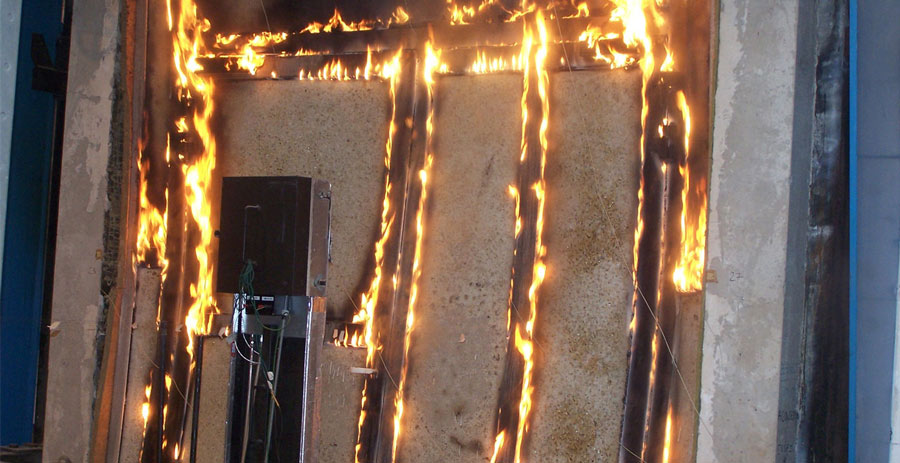Behind the scenes of a fire safety glass test
Test evidence and certification is, understandably, a central part of the fire safety industry – but how much do you know about the way in which this test evidence is obtained?
In the latest column, Simon Ellison, Technical Support Manager, provides a ‘behind the scenes’ view of a fire safety glass test.

The results of a fire safety glass test – the test report and classification report – are a key part of the fire safety industry, providing the test evidence and certification required to specify the correct system for a project’s requirements. But the process of planning and executing a fire safety glass test can go far beyond the test date itself, with months of hard work, research and resources invested.
Audit Test and Scope Extension Test
There are primarily two main reasons for a fire test being undertaken. The first is an Audit Test or Annual Test. This can be a requirement from testing and certification bodies, ensuring that a manufacturer’s products are still fit for purpose and that nothing has materially changed in either materials or processes. This will also help a manufacturer to maintain their test evidence, where required.
The second, and perhaps more common, is for the purposes of scope extension, expanding the range of application and sizes. This could take many forms, from collaborating with a new and existing framing manufacturer, offering a new profile, expanding into larger glass pane sizes (particularly relevant given the recent rise of glass façades), or looking at alternative aspects, such as new glazing medias or high-performance complementary products and counterpanes. Given that the architectural and built environment sectors are always evolving, it’s important for manufacturers to continue pushing the boundaries and seeing what else is possible with fire safety glass.
It’s all in the preparation
Perhaps the very first stage of a scope extension fire safety glass test, once you have decided what you are wanting to test, is to research and investigate what the current market requirements are. This would then be used as a means of benchmarking the test performance, with the aim to either meet or exceed the current requirements.
The process then moves onto designing the test itself, referring to the Test Standard to ensure all the requirements of the standard are complied with. Here, it is also important to remember the real-life application of what you are testing for and ensure that the test context mirrors this. For example, if testing a glazed partition, you would likely include the installation of a door too at one stage, as these would often be found together. This approach often results in multiple tests to gain full coverage.
Test day
The test itself is carried out in a notified, approved laboratory, with installation and testing overseen, inspected and surveyed by the testing body. The profiles are fabricated and installed in accordance with the approved system house design. The glass, having been pre-sampled, is fitted into the installed frame and the whole construction is then mounted on a fire test furnace. This installation will present one side of the specimen as an exposed side to the fire, with the whole system continually monitored for the duration of the test.
You only have to look at a photo of a fire test to see the mass of wires and sensors used. These wires will all be monitoring a variety of factors, including the surface temperature of the glass and the frame, any deflection of the framing system, thermal-radiation levels and any cracks or fissures in the glass. The Test Standard sets out the specific thresholds that have to be met in order for a test to be deemed a ‘pass’.
While monitoring and testing technology has advanced, there are also some simpler techniques that can be used, such as the ‘cotton pad test’. Here, a cotton pad is placed within a small steel frame and applied to the surface of the glass where a small gap or fissure has appeared. If the pad glows or, worse, ignites, then this is used to evaluate the classification of the product.
How long is long enough?
It is common practice to continue the test for as long as possible, until the system fails completely on both Integrity (the base classification) and Insulation. This means that you could be testing one system and yet end the test with the system achieving multiple classifications.
As an example, imagine that you were testing a system with EI30 glass. Insulation (that is, the amount of heat transmitted to the unexposed side) could be maintained for 34 minutes, whereas the system may not fail on Integrity (the ability to prevent the passage of smoke and flame) until 65 minutes have passed. This one system test would therefore give you both EI30 (Integrity and Insulation) and E60 (Integrity) classifications.
It may be an obvious statement to make but it’s important to remember that every fire safety glass test is just that: a test. There is never any guarantee. After all, it isn’t just the glass you are testing but the system as a whole and all of its individual factors and components, which can be unpredictable. Fire safety glass tests are all about experimenting and working to push the boundaries further and are essential if we are to continue enabling the construction of beautiful and safe living and working spaces.
For more information, please contact us.
